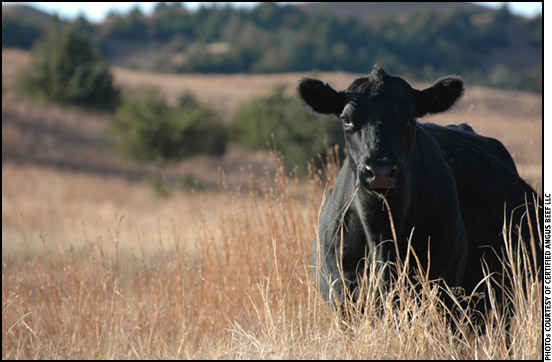
Beef Segmentation
How the beef value chain works.
When cattle prices erratically head lower, it’s easy to take issue with reports of higher packer margins or retail beef prices that still seem relatively high.
In a volatile market, the segments along beef’s supply chain often see much above- or below-average returns.

Brent Eichar
“A lot of our beef producers eat their own product,” notes Brent Eichar, senior vice president for the Certified Angus Beef® (CAB®) brand. “So at times there is a bit of a disconnect over how we got from $1.60 [per hundredweight] cattle last year to $14.99 [per pound] ribeye steak.”
Basic beef math explains part of that, as the first processing step leaves 35% of the live weight behind, and breaking down into retail cuts leaves half of what is left, Eichar explains: “Only 30% to 35% of the live weight is actually beef.”
Packers and retailers typically work on narrow margins.
“They pay their meat cutters, staff, overhead — nobody in this industry is getting entirely rich,” he says.
Still, there are ways for producers to move toward greater profitability by keeping all segments of the supply chain in mind, say Eichar and Kansas State University economist Ted Schroeder.
The premiums for top-quality cattle don’t just drop out of thin air. They’re earned at every point in beef production, and Schroeder says they begin at the consumer level.
“In producing, processing, marketing, positioning and putting that product in the consumer’s hands — all those activities take investment and scrutiny to make sure there is integrity throughout the value chain,” he says.

Ted Schroeder
Costs vary for each segment. As the retailers allocate room in the meatcase for branded products, processors sort and package to ensure the product moves into the right channels.
“It takes focus on the ranch, too,” Schroeder points out, noting investments in genetics and management.
“We have to have price signaling going on,” he says, “or someone would not have the incentive to invest. But the transmissions will always reflect some of the costs involved in that additional activity at each level.”
That’s why the wholesale premiums for higher-quality cattle do not match the Choice-Select spread, for example.
“You will never have the consumer’s premium equal to the producer’s premium, but you would sure expect a percentage of it, and that is indeed what we see,” he says.
Eichar says cattlemen and those who process and sell their products have a lot in common.
“Day to day, it comes down to passion and doing the right thing to feed families, to make a living and generate a profit so they can grow their businesses,” he says.
With so much common ground, everyone along the beef supply chain is a partner, the economist and branded-beef leader agree.

Editor’s Note: Hannah Johlman is an industry information intern for Certified Angus Beef LLC.






